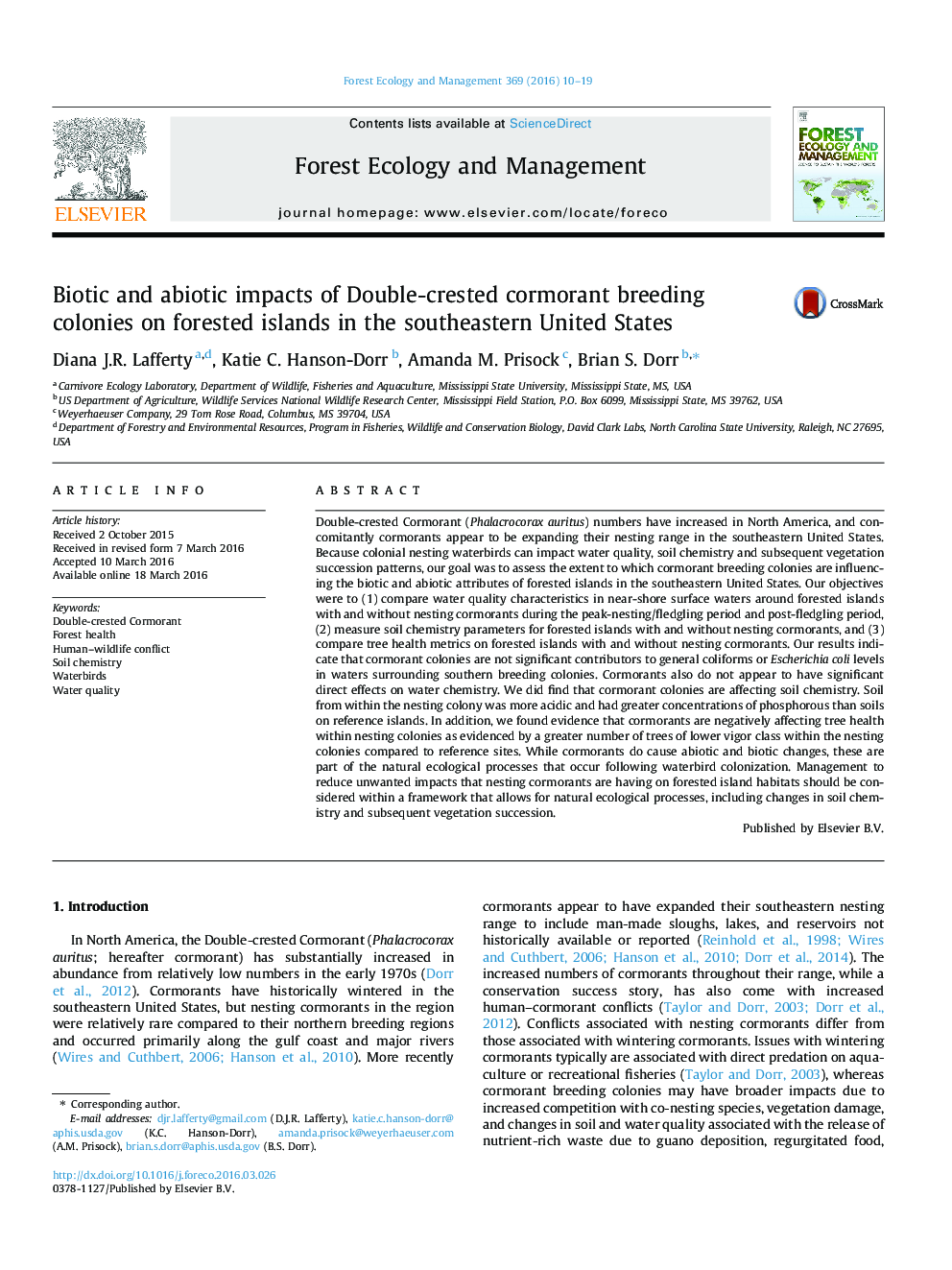| کد مقاله | کد نشریه | سال انتشار | مقاله انگلیسی | نسخه تمام متن |
|---|---|---|---|---|
| 85924 | 159152 | 2016 | 10 صفحه PDF | دانلود رایگان |
• Double-crested cormorants are expanding their nesting range in the southeastern US.
• Nesting cormorants are affecting soil chemistry and forest structure.
• Nesting cormorants are having little effect on water quality and water chemistry.
• Forest succession following waterbird colonization is a natural process.
Double-crested Cormorant (Phalacrocorax auritus) numbers have increased in North America, and concomitantly cormorants appear to be expanding their nesting range in the southeastern United States. Because colonial nesting waterbirds can impact water quality, soil chemistry and subsequent vegetation succession patterns, our goal was to assess the extent to which cormorant breeding colonies are influencing the biotic and abiotic attributes of forested islands in the southeastern United States. Our objectives were to (1) compare water quality characteristics in near-shore surface waters around forested islands with and without nesting cormorants during the peak-nesting/fledgling period and post-fledgling period, (2) measure soil chemistry parameters for forested islands with and without nesting cormorants, and (3) compare tree health metrics on forested islands with and without nesting cormorants. Our results indicate that cormorant colonies are not significant contributors to general coliforms or Escherichia coli levels in waters surrounding southern breeding colonies. Cormorants also do not appear to have significant direct effects on water chemistry. We did find that cormorant colonies are affecting soil chemistry. Soil from within the nesting colony was more acidic and had greater concentrations of phosphorous than soils on reference islands. In addition, we found evidence that cormorants are negatively affecting tree health within nesting colonies as evidenced by a greater number of trees of lower vigor class within the nesting colonies compared to reference sites. While cormorants do cause abiotic and biotic changes, these are part of the natural ecological processes that occur following waterbird colonization. Management to reduce unwanted impacts that nesting cormorants are having on forested island habitats should be considered within a framework that allows for natural ecological processes, including changes in soil chemistry and subsequent vegetation succession.
Journal: Forest Ecology and Management - Volume 369, 1 June 2016, Pages 10–19
